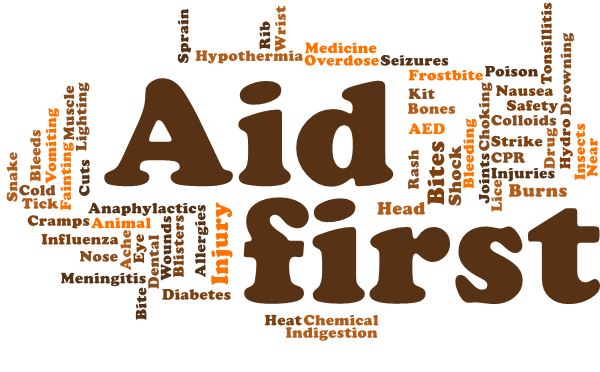
Near Drowning
What is near-drowning?
Near-drowning is a common but out-of-date phrase for surviving a drowning event.
Drowning happens when a person is underwater and breathes water into the lungs. The airway (larynx) can spasm and close, or water can damage the lungs and keep them from taking in oxygen. In either case, the lungs can’t supply oxygen to the body. This can be deadly.
Going without oxygen has a rapid effect on the body.
- Within 3 minutes underwater, most people lose consciousness.
- Within 5 minutes underwater, the brain’s oxygen supply begins to drop. A lack of oxygen can cause brain damage.
Symptoms:
- Pale cool skin
- Weak or absent pulse
- Labored or absent breathing
- Slightly conscious or unconscious
- Cyanosis (bluish discoloration of the skin)
What happens after a person survives a drowning?
Right after a drowning, a person may:
- Be unconscious, unable to breathe, or without a heartbeat.
- Gasp for air, cough up pink froth, vomit, or breathe rapidly.
- Seem to be fine.
Even a little water in the lungs can cause serious lung problems in the next hours or days. Emergency medical care is critical after a person survives a drowning.
When to call your doctor
Call or other emergency services immediately if a drowning victim has:
- Lost consciousness.
- Stopped breathing.
- No heartbeat.
- Inhaled water and then gasped for air, coughed up pink froth, vomited, or breathed rapidly.
- Become confused or seems to be in an altered mental state.
Call a doctor now if a recent drowning victim has new breathing problems or signs of a lung infection, such as:
- A cough with or without colored mucus.
- Rapid breathing. Breaths may also be shallow.
- Shortness of breath.
- A fever.
- An unusual level of weakness.
- A whistling noise (wheezing) while breathing.
- Tightness in the chest.
Drowning Self-Care at Home:
In a drowning emergency, the sooner the victim is removed from the water and first aid is administered, the greater opportunity the victim has for surviving.
First aid for a drowning victim:
The focus of the first aid for a drowning victim in the water is to get oxygen into the lungs. Depending upon the circumstances, if there is concern that a neck injury is a possibility (for example, a diving accident) care should be taken to minimize movement of the neck.
When assessing a drowning victim, the first steps for care follow the initial American Heart Association guidelines.
- Is the victim awake?
- Are they breathing on their own?
- Do they have a heartbeat?
Rescue breathing can begin in the water, but all other care requires that the victim be safely out of the water. If other people are available, send person to get help and call emergency. Send another person to get an automated external defibrillator (AED).
If the victim is breathing, he or she should be placed on their side in the recovery position to prevent potential aspiration should vomiting occur (inhaling vomit into the lung).
If the victim is not breathing and has no pulse, begin cardiopulmonary resuscitation (CPR). This is one of the exceptions to the hands-only CPR guidelines. If possible, rescue breathing needs to be initiated in a possible drowning victim.
There are some controversies in medical research that potentially might confuse bystanders who are willing to help. It is important to remember that a drowning victim who is not breathing and does not have a pulse is effectively dead, and any attempts at helping are appropriate.
Recently, chest compression only resuscitation has been endorsed by the American Heart Association and the American College of Cardiology, and rescue breathing is not recommended. This is not the case with drowning, since the initial insult to the body is lack of oxygen. This requires providing oxygen to the victim as soon as possible. This is a different situation than a patient who collapses on dry land, usually has a heart rhythm disturbance and adequate oxygen levels are present in the blood for a few minutes.
It usually is recommended to start rewarming drowning victims by removing wet clothing and covering them in warm blankets. This is appropriate if the patient who has not lost their pulse, or has been resuscitated and is awake.
For a potential drowning victim who was administered CPR, and the pulse has returned, but is still not awake, keeping the patient cool may be appropriate.
More research is required to determine what new approaches might be applicable to effectively treat drowning victims.
Drowning Prevention
As with any accident, prevention is the key.
- Learning how to swim should be a priority for all children and for people of all ages.
- A home swimming pool should always be fenced and secure. Motion detectors may be helpful should the fence fail to keep out unsupervised children.
- When participating in water sports, the use of a personal floatation device (life jacket) is mandatory. Pool toys are not a substitute.
- Alcohol is a major contributor to drowning accidents. Water and alcohol don’t mix.
- Never leave an infant unattended in a bath tub or near water.
- Never leave a child unattended near water, whether that is a swimming pool or natural water.
Know where you are swimming:
- Make certain the depth is at least 10 feet if you decide to dive into the water
- Know about the dangerous undercurrents and waves that occur in fresh or sea water
- Avoid dangerous marine animals such as jellyfish and fire coral
- Know the depth of ice before walking on it
- Never swim alone.
- Learn CPR
Rescue for unconscious drowning victims
CPR for drowning patient







